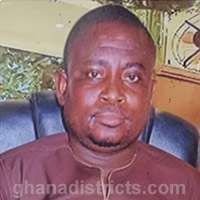This chapter discusses the administrative structure of the District Assembly, its operational procedures, institutional procedures, institutional arrangements linking the various private and public organizations to the District Assembly and local government finance.
District Assembly: Structure
The Kwaebibirem District Assembly is the highest administrative and political body exercising deliberative, legislative and executive functions in the district. The District Assembly operates an eight-tier structure, which corresponds to the structure proposed by the Local Government Act 462 (1993) Act. 462.
The vertical linkages between the various hierarchies indicate subordinate relationship. On the other hand, the link between the units on the same level is consultative. At the apex of the structure is the office of the District Assembly. Following this is the District Executive Committee, which serves as the executive and co-ordinating body of the Assembly.
The District Chief Executive (DCE) who is appointed by the government chairs the Executive Committee. He also serves as the political and administrative head of the District. The next level comprises eight sub-committees. These sub-committees are:
• finance and administration;
• works;
• development planning;
• social services;
• environmental management;
• justice and security; and
• Youth and sports,
• Education
These sub-committees are charged with the responsibility of collation and deliberation on issues that the executive may direct to them. Below the sub-committees is the office of the District Co-ordinating Director, followed the deputy-director in charge of the Administration. Also, below the office of the District Co-ordinating Director is the District Planning Co-ordinating Unit (DPCU), which is made up of Ten Heads of Departments and the Chairperson of the development planning Sub-committee..
This unit performs planning, monitoring, evaluation, co-ordination assignments of the District Assembly among others. Finally, specialized District Assembly departments and non-decentralized departments are found at the bottom of the Kwaebibirem District organogram. Refer to pdf table
The link between these departments is consultative. The Kwaebibirem District Assembly has all the eleven (11) decentralized departments as enshrined in the Local Government Act (1993), Act 462. However, the following units in some of the departments are non-existent:
1. Ghana Library Board;
2. Rural Housing and Cottage Industry;
3. Games and Wildlife;
4. Trade; and industry
District Assembly: Functions
The District Assembly, as the highest administrative and political authority of the district, is expected to perform the following functions, as provided in the Local Government Act, 1993 (Act 462).
1. Be responsible for the overall development of the district. The Assembly-shall ensure the preparation and submission of development action plans through the Regional Co¬ordinating Council to the NDPC and budgets to the Ministry of Finance for Approval;
2. Formulate and execute plans, programmes and strategies for the effective mobilization of resources for the overall development of the district;
3. Promote and support productive activities and social development in the district and remove any obstacles to initiative and development;
4. Initiate progammes for the development of basic infrastructure and provide municipal works and services in the district;
5. Be responsible for the development, improvement and management of human settlements and the environment in the district;
6. In cooperation with appropriate national and local security agencies, be responsible for the maintenance of security and public safety in the district;
7. Ensure easy access to courts and public tribunals in the district for the promotion of justice;
8. Initiate, sponsor or carry out such studies as may be necessary for the discharge of any of the functions confirmed by this law or any other enactment; and
9. Perform such other functions as may be provided under any other enactment.
Urban, Town and Area Councils
Eleven (11) Urban, Town and Area Councils have been formed in the District. There are:
Akwatia Urban Council
Kade Town Council
Okumaning Area Council
Oseawuo Area Council
Pramkese Area Council
Mmo Area Council
Nkwantanang Area Council
Asuom Area Council
Kwae Area Council
Abaam Area Council
These operate as sub-structure of the District Assembly and perform their functions subjects such directives and guidelines as the District Assembly may issue. There are also one hundred and fifty -two (152) Unit Committee, with eighty-six (86) in Kade Constituency and sixty-six (66) in Akwatia Constituency which perform functions through the Urban, Two and Area Councils.’
Due to limited resources, the Assembly has not been able to resource these substructures and are therefore not functioning.
Staffing
Various institutions operating in Kwaebibirem District are faced with many problems that are common to most of them. Quantity and quality of staff is one of the problems that are most commonly complained of as hindering the performance of the institutions.
Others include inadequate logistics and equipment such as computers, vehicles etc. There is also inadequate office and residential accommodation. The departments are not functioning effectively because they are not fully integrated.
Furthermore the decentralized departments are not functioning effectively because they are still made to look at their parent organizations both Regional and National for support, which is not forth coming. This has resulted from the fact that the process of decentralization has not been fully completed.
Good Governance
a.Weak Capacity of District Assembly (Staff quality and quantity of personnel)
• Inadequate Logistics and equipment
• Inadequate office and Residential accommodation for District Assembly Staff
• Poor co-ordination and integration of District Assembly Departments
• Non Functioning of Sub-Structure of the District Assembly
• Inadequate Security Services
• Inadequate Residential accommodation for Security Service
• Incomplete decentralization
• Presence of Chieftaincy dispute
• Inadequate Private Public Partnership in District Development
• Low Community Participation in decision-making
• Insufficient knowledge of the Constitution and District Assembly Policies.
Date Created : 11/24/2017 6:23:00 AM





